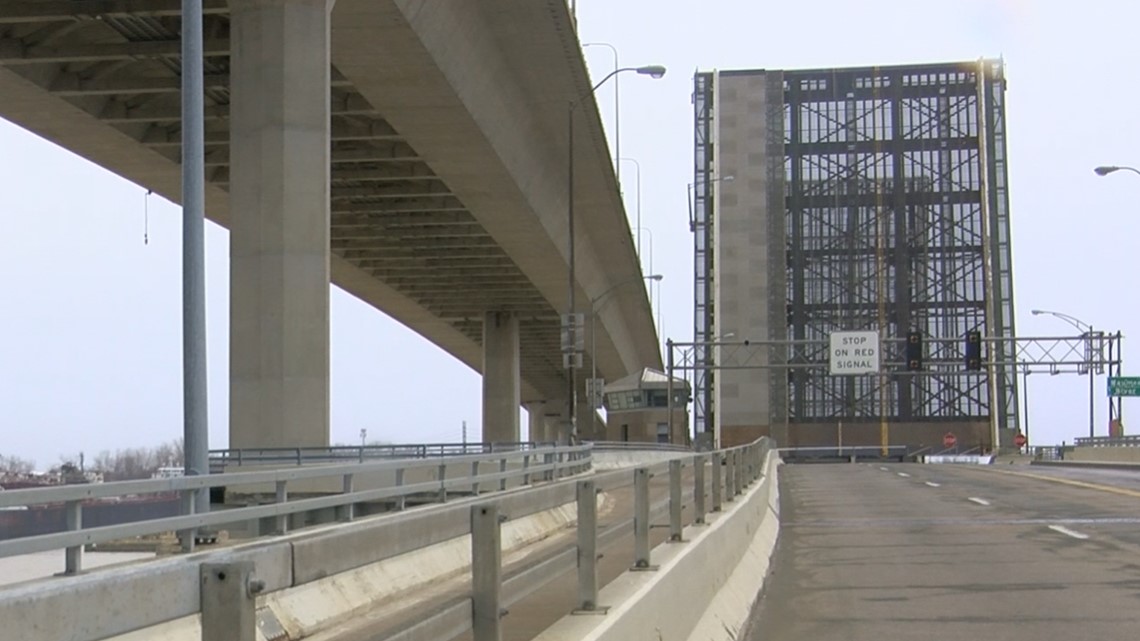
The Craig Street Bridge in Toledo, Ohio, is a historic landmark that has played a significant role in connecting communities for over a century. Spanning the Maumee River, this iconic structure has not only served as a vital transportation link but has also become an integral part of the city’s identity. In this article, we will delve into the history, design, significance, and future prospects of the Craig Street Bridge.
A Glimpse into History
The Craig Street Bridge, also known as the Cherry Street Bridge, was constructed in 1914 and opened to the public in 1915. Designed by the renowned engineer Frank P. Burns, this steel truss bridge replaced an earlier wooden structure that had become inadequate to handle the increasing traffic demands of the time. The bridge was named after William W. Craig, a prominent Toledo businessman and philanthropist who played a crucial role in its construction.
Design and Architecture
The Craig Street Bridge boasts an impressive architectural design that blends functionality with aesthetic appeal. The bridge spans approximately 1,400 feet and consists of multiple steel truss spans supported by concrete piers. Its distinctive green color, which has become synonymous with the city of Toledo, adds to its charm and visibility.
One notable feature of the bridge is its vertical lift mechanism, allowing it to accommodate large vessels passing underneath. This feature was particularly important during the early 20th century when shipping played a vital role in Toledo’s economy. Today, while the vertical lift remains operational, it is rarely used due to changes in transportation patterns.
Significance to the Community
The Craig Street Bridge holds immense significance to the community of Toledo. It not only serves as a crucial transportation link between downtown Toledo and the east side of the city but also acts as a symbol of unity and connection. The bridge has witnessed the growth and development of Toledo over the years, serving as a witness to the city’s progress.
Moreover, the Craig Street Bridge has become an iconic landmark that is often featured in postcards, photographs, and artwork depicting Toledo’s skyline. It has become a source of pride for the residents, representing the city’s rich history and industrial heritage.
Preservation and Future Prospects
Preserving the Craig Street Bridge has been a priority for the city of Toledo. In recent years, efforts have been made to ensure the structural integrity of the bridge while maintaining its historical character. Regular inspections and maintenance work have been carried out to address any issues and prolong its lifespan.
However, discussions about the future of the Craig Street Bridge have also emerged. As transportation needs evolve, there have been debates about whether the bridge should be replaced or undergo significant modifications to accommodate modern traffic demands. Balancing preservation with functionality is a challenge that city officials continue to grapple with.
Despite these discussions, it is clear that the Craig Street Bridge holds a special place in the hearts of Toledoans. Its historical significance and architectural beauty make it an invaluable asset to the community. Whether it continues to serve as a functional bridge or takes on a new role as a pedestrian walkway or tourist attraction, the Craig Street Bridge will undoubtedly remain a cherished part of Toledo’s landscape.
Conclusion
The Craig Street Bridge in Toledo stands as a testament to the city’s rich history and serves as a vital link between communities. With its impressive design, historical significance, and iconic status, it has become an integral part of Toledo’s identity. As discussions about its future continue, it is crucial to balance preservation with functionality to ensure that this historic landmark continues to connect communities for generations to come.








